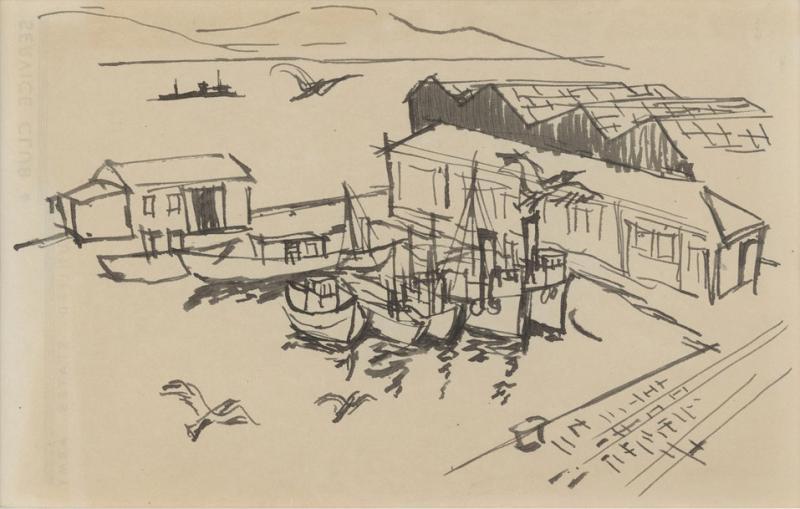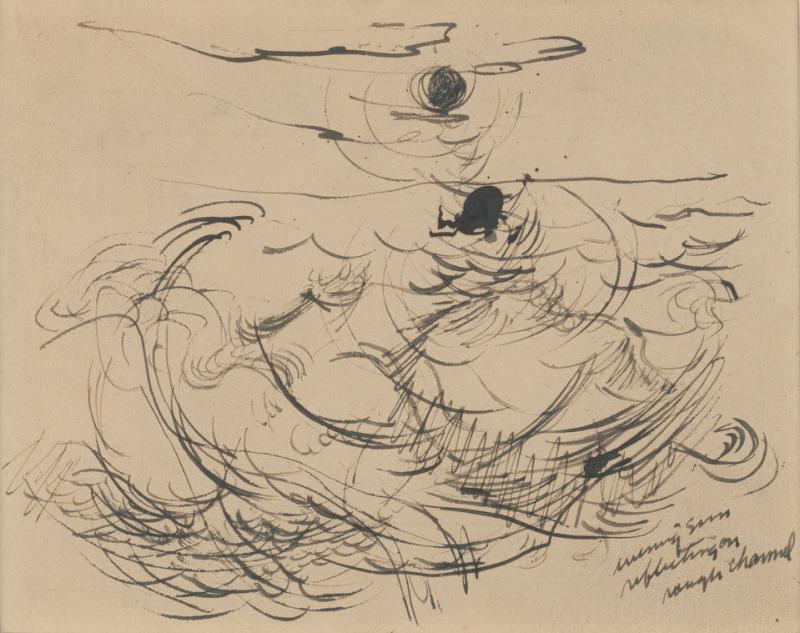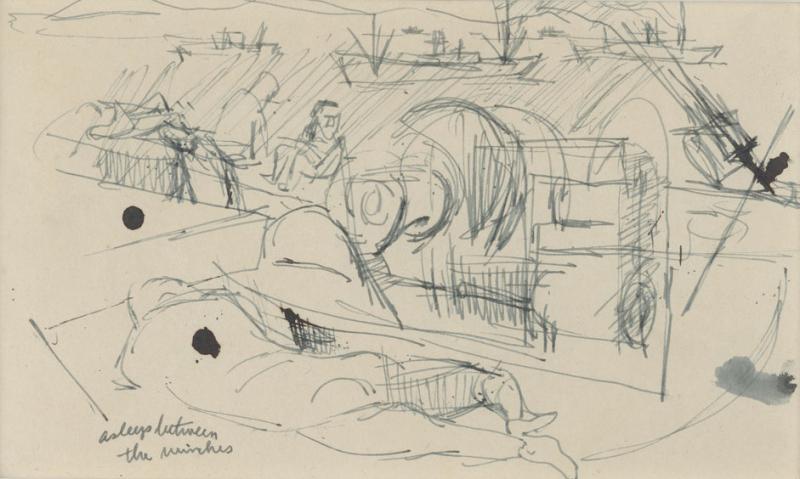While serving as a stevedore in the segregated US Army during World War II, Bryan drew constantly. “It was,” he wrote in his 2019 memoir Infinite Hope, “my means of escape—escape into the potential beauty of a drawing, my way of staying sane, staying hopeful.” These three sketches from the period portray his everyday surroundings: ships, ports, the ocean, and the men he served with.
Ashley Bryan (1923–2022)
Three sketches, 1943–46
Pen and ink
University of Pennsylvania, Kislak Center for Special Collections, Ashley Bryan Papers
© 2022 The Ashley Bryan Center. Used with Permission.
Sandy Campbell: When he was midway through art school, Ashley was drafted into the U.S. Army. In this interview, you can hear him talking about what it was like to serve in the segregated Army and how he continued to make art despite the challenges.
Ashley Bryan: At the time I was taking it, I was interrupted in the third year by the second World War and drafted into a segregated army in the second World War.
Sandy Phippen: What was it like, Ashley, among the black guys, American black guys, to be segregated from the rest of the Army?
Ashley Bryan: Well you immediately knew that it was very hard to maintain that spirit of what you were fighting for because you're always being used badly, you were not given the privileges of other soldiers, the white soldiers. Although we were in the invasion group and were to be retired after a month to a rest area, that never happened with the black soldiers. We continued to work in that area until the beach closed down, you see. And so, you always had that and generally, you had white officers who were not sympathetic to black people, you know, and so you always had that to contend with while you maintain your, yourself, you know, and so I was always drawing and that was a way I kept myself together and they were always telling me to stop drawing but I said, I'll never stop drawing. I had my drawing materials all in my backpack, in the gas mask, and whenever there was not a time to work, I would have out my sketch pad and I would be drawing. The fellows who had been drafted into the army or in the army said after they saw this, they said, Ashley, how did you, where did you get the time to do drawing and painting in the army? And I looked at them quite innocently and said, wasn't I supposed to keep growing as an artist? They said, Ashley, you were a GI, that meant government issue. You had no rights. But I was only fighting for what I thought were my rights. I didn't know I had none.



